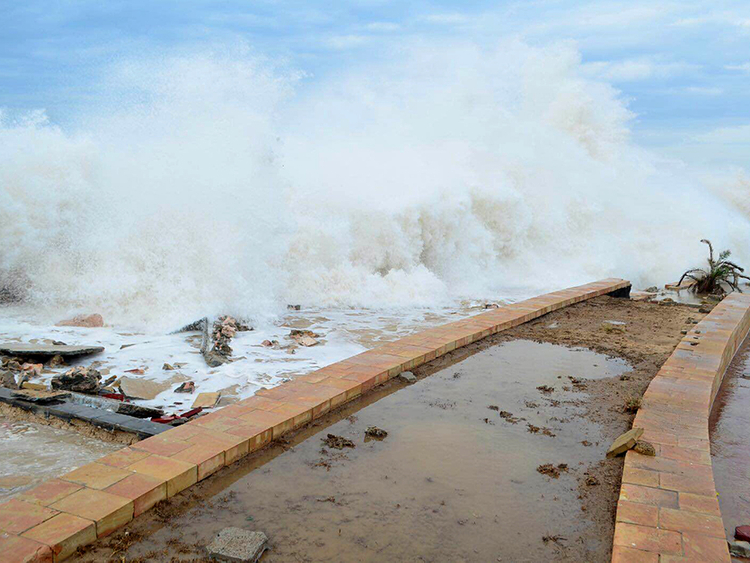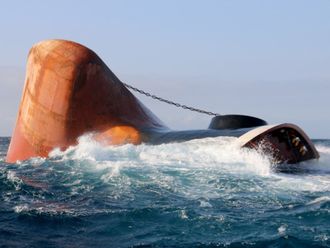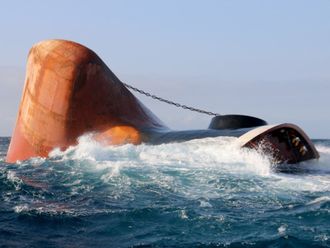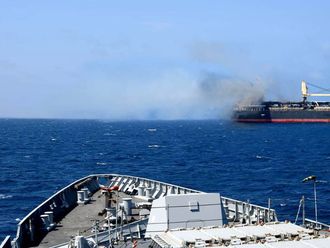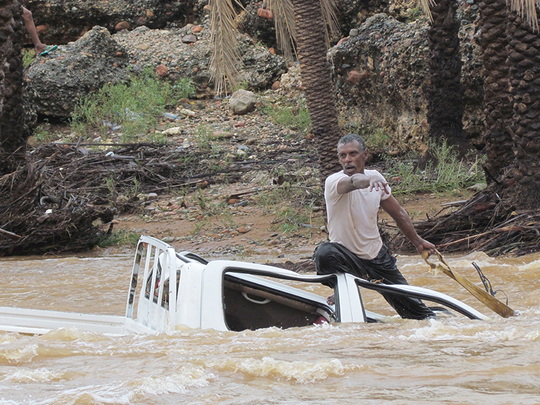
Dubai: Cyclone Chapala was expected to unleash 400mm of tropical rainfall on central coastal Yemen by the end of the day on Tuesday when it dumps three years worth of precipitation within 24 hours, says a leading global weather expert on climate anomalies.
Dr Mansour Al Mazroui, Director of Centre of Excellence for Climate Change at King Abdul Aziz University in Jeddah, Saudi Arabia, said on Monday that computer models at the centre suggest that Yemen will be battered by the Category 1 storm with winds of 150-175 km/h by the time it makes landfall on the mainland.
The depression will morph into a tropical storm and decrease in intensity as it moves inland to release its torrential rainfall.
“We’re running models and it’s showing 400mm of rain — that’s more than three years of rain all at once,” he said.
“This cyclone is considered a very tropical cyclone for that region,” Dr Al Mazroui told Gulf News. “Most [Indian Ocean] cyclones hit India but very few go north. We’re seeing now the second strongest cyclone [in the region’s history] and it’s hitting Yemen. It is remarkable.”
The rare cyclone hit the Yemeni island of Socotra on Monday, killing three people and injuring dozens, residents and officials said, as it headed for an Al Qaida-controlled town on the mainland.
"The cyclone is approaching Mukalla and we fear a disaster," one official at the provincial capital said, requesting anonymity.
"Families have evacuated coastal areas and residents are organising themselves and helping each other to deal with the cyclone," he added.
The city has been mostly controlled by militants of Al Qaida in the Arabian Peninsula since April.
On Socotra, "more than 200 people were injured and dozens of houses and hamlets were either heavily damaged by water or washed away by waves", said Salem Zaher, mayor of the island's main district Hadibo.
Socotra is less than 250 kilometres (150 miles) from the Horn of Africa and 350 kilometres off the Yemeni mainland.
Amateur pictures and videos on social media, which could not be immediately verified, showed torrents of water washing through the provincial capital Hadibu’s streets.
“Three people were killed, around 100 have been injured and hundreds of families were forced to leave their homes in coastal regions for the mountains,” said a local official, without elaborating on the causes of death. The island has likely not experienced a cyclone of hurricane-equivalent intensity since 1922, according to Weather.com.
“Chapala’s rate of intensification from a high-end tropical storm to a high-end Category 4 storm in 24 hours ending 2am EDT Friday morning was quite impressive for this part of the world,” said a Weather.com report.
The strongest cyclone in recorded history to hit the Arabian Peninsula was Gonu when it slammed into northern reaches of Oman in 2007.
Dr Al Mazroui said high resolution computer-simulation models were predicting until late last night serious flooding of areas in central Yemen given that is a highly arid part of the country placed along the southern coast of the Arabian Peninsula.
The forecast, he said, is predicting the storm will make landfall somewhere near Al Mukalla, Yemen, the fifth largest city along the coast with a population of around 300,000.
Dr Al Mazroui said it is unlikely the storm will affect the UAE or other parts of the peninsula.
Situated in the Arabian Sea, isolated Socotra is home to hundreds of exotic plant species found nowhere else on earth. Its around 50,000 residents speak their own language.
The US Navy’s Pearl Harbor-based Joint Typhoon Warning Centre said the storm had reached maximum gusts of 240 km per hour, equivalent to a category 4 hurricane. Yemeni officials said it was the most powerful storm the mostly arid and hot country had experienced in decades.
The centre projected the cyclone would make landfall on the mainland just west of the restive port city of Mukalla, which has been run by a tribal council and Al Qaida militants since the army and government institutions withdrew in April.
Residents there worried that the power vacuum would mean no authorities were in a position to deal with the storm damage.
“The sea water level has risen by 9 metres and has destroyed the Mukalla seafront,” said resident Mohammad Ba Zuhair.
“Many people have left their homes and are seeking refuge in schools. No relief or aid efforts are under way by either the tribal council or Al Qaida, and the situation is really bad.”
— with inputs from agencies


